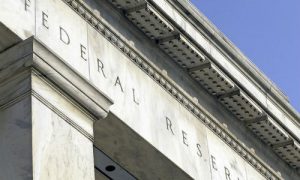Limited access to financial resources often slows or impedes revitalization efforts in low-income communities. But several financial institutions provide financial services for local businesses, real-estate projects and nonprofits and others in areas where conventional financial institutions would see too much risk. These Community Development Financial Institutions invest in capital projects in underserved markets.
Learn more about these financial institutions to discover unique money stories in your community. Here’s how to get started:
Find out: what projects do CDFIs fund in your community?
Compared to the more traditional for-profit, government regulated financial institutions, CDFIs many are not accountable to shareholders, and CDFIs finance projects more traditional banks avoid in order to stay profitable for shareholders.
CDFIs emerged after the Savings and Loan Crisis in the 80s and 90s when many S&Ls closed after depositors yanked their money looking for higher returns. CDFIs began lending to the underserved markets and now provide small local loans on projects within the communities they’re located in. CDFIs are mission-driven–“profitable but not profit-maximizing,” according to the Opportunity Finance Network, the nation’s largest network of CDFIs. More than 200 lending institutions and non-profits are members.
You can search OFN’s interactive directory tool online to locate these groups and nonprofits in your coverage area. The network also produces helpful policy papers and regular reports.
Businesses tackling problems in their communities
Once you know what institutions lend to projects in these communities, you can seek stories of how regions have put the funds to use.
For example, in 2005 Hurricane Katrina decimated Circle Foods, a local grocery store in a New Orleans’ black community for more than 60 years. The grocer was one of the first projects funded through Fresh Food Retailer Initiative. With a $1 million loan, Circle Foods reopened a 22,000-foot grocery store in 2014 in New Orleans’ 7th Ward, a community lacking access to fresh food.
What problems are these types of lending organizations working to tackle in your community: affordable housing, a food desert, access to jobs?
Where is the money coming from?
The CDFI Fund has awarded more than $2 billion in grants to organizations since launching in 1994, according to the U.S. Treasury Department. Many large banks have backed organizations with investments too. After the Community Reinvestment Act directed financial institutions to invest in communities where they have locations, many larger banks started investing in CDFIs to meet that directive, according to the National Community Reinvestment Coalition, a group working on policy and research on community development initiatives. Banks can invest in CDFIs and reduce their risk in those markets. Some banks, however, have a designated Community Lending Officer directing lending to capital projects in these communities rather than or in addition to investing in CDFIs.
And, as with any financial institution, CDFIs also receive returns on their investments and have other revenue streams. Additionally, some financial institutions offer grants for projects and CDFIs can compete for those funding streams. The CDFI’s 990s and annual reports– usually available online– offer detailed insight into the revenue streams for these nonprofit lending groups.
How are CDFIs in your town or city funded? Which major players back them and what motivates their large gifts and investments? What about the CDFI’s impact on low-income residents in your city over time? Also, reach out to community investment officers at more traditional banks in your coverage area. Do they invest in CDFIs or lend directly to more risky projects in their community?
Dive into the CDFI data
The Treasury collects research and data on the impact of CDFI lending. The department releases a summary report on their impacts including thorough data analysis from the organizations receiving the government funds. These organizations must report on the loans they give out. Dive into the data for a better understanding of the types of lending these organizations do and, of course, the numbers behind their work.
How do CDFIs provide loans and investments in low-income communities? What is the economic impact behind the stories these lending institutions include in their press releases and annual reports?











